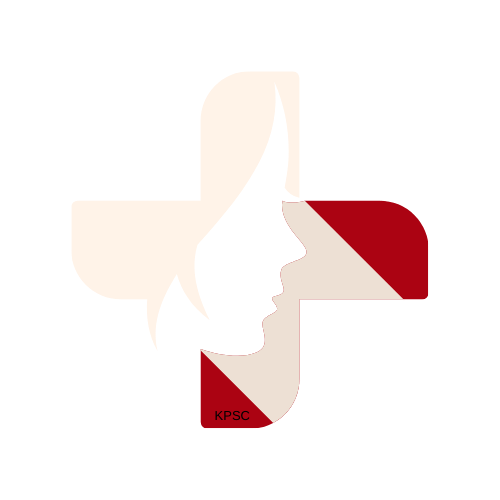Best African Rhinoplasty Clinics in Seoul | Cost & Guide
Restore your nose’s form, function, and confidence.
African rhinoplasty is a specialized procedure designed to address the unique characteristics of the nose in individuals of African descent. Whether your concerns are aesthetic or functional, our expert team in Seoul is here to deliver natural-looking and long-lasting results.
Why Is African Rhinoplasty Performed?
- Widened Nasal Base
Individuals with wider nasal bases may seek African rhinoplasty to narrow the nostrils and create a more defined, symmetrical nose shape. This can help bring balance to the face without compromising the ethnic identity. - Flat Nasal Bridge
A flat or low nasal bridge is a common feature, and African rhinoplasty can increase projection or reshape the bridge to create more definition, providing a more balanced appearance in relation to the face. - Refining the Nasal Tip
The nasal tip in African noses is often more rounded or wider. African rhinoplasty can help refine the tip, making it more defined and proportionate to the rest of the nose and facial features. - Restoring Nasal Function
In some cases, African rhinoplasty can also correct functional issues, such as a deviated septum or nasal breathing problems, while improving the nose's aesthetic appearance.
Benefits of African Rhinoplasty
- Cultural Sensitivity: The procedure is designed to enhance your natural features while respecting your ethnic heritage, ensuring results that complement your facial features.
- Improved Nasal Appearance: Narrowing the nostrils, increasing bridge projection, and defining the nasal tip to create a more proportionate and balanced appearance.
- Enhanced Facial Harmony: African rhinoplasty can improve the overall balance of the face by reshaping the nose to blend better with other facial features.
- Boosted Confidence: Many patients experience increased self-esteem and confidence after the procedure, feeling more comfortable and satisfied with their appearance.
- Permanent, Natural-Looking Results: The results of African rhinoplasty are long-lasting, providing a natural and aesthetically pleasing improvement that enhances your facial harmony.
What to Expect During the Procedure
African rhinoplasty is typically performed under general anesthesia, ensuring comfort and safety throughout the surgery. The procedure may take between 1.5 to 3 hours, depending on the complexity of the surgery and the desired changes.
Key Steps of the African Rhinoplasty Procedure:
- Consultation & Planning
During your consultation, the surgeon will carefully assess your nasal anatomy, understand your aesthetic goals, and discuss the most suitable approach for reshaping your nose. The surgeon will work with you to ensure that the results meet your expectations while respecting your ethnic features. - Incision Placement
Incisions for African rhinoplasty can be made in either an open or closed approach, depending on the complexity and the surgeon's preferred technique: - Open Rhinoplasty: An incision is made across the columella (the small strip of tissue between the nostrils) for greater visibility and access to the nasal structures.
- Closed Rhinoplasty: All incisions are made inside the nostrils, leaving no visible scars.
- Reshaping the Nose
The surgeon will reshape the nasal bone and cartilage, refine the tip, or add cartilage grafts (often taken from the ear or rib) to increase projection, particularly for individuals with a flat nasal bridge. The nostrils may also be narrowed, and excess tissue will be removed for a more defined shape. - Closure & Dressing
Once the reshaping is complete, the incisions are closed with fine sutures, and a nasal splint or dressing is applied to support the nose during the initial healing phase. The procedure is typically done on an outpatient basis, allowing you to go home the same day.
Recovery & Aftercare
Recovery from African rhinoplasty follows similar guidelines to traditional rhinoplasty, though the healing process can vary depending on the extent of the surgery and individual factors. Here's what you can expect:
- Recovery Time: Most patients can return to light activities within 1 to 2 weeks, but strenuous activities and exercise should be avoided for 4 to 6 weeks.
- Swelling and Bruising: Swelling and bruising around the nose and eyes are common but usually subside within 2 to 3 weeks. The majority of swelling will resolve within 4 to 6 weeks, but some residual swelling may persist for several months.
- Nasal Splint or Bandages: A nasal splint may be placed on the nose to support the structure during the initial healing phase. It is also important to avoid any contact with the nose during the first few weeks of recovery.
- Follow-up Appointments: Follow-up visits are essential to monitor the healing process, remove any sutures, and ensure the nose is healing as expected.
- Final Results in 6 to 12 Months: The final results of African rhinoplasty will become visible once the swelling completely subsides, usually after 6 to 12 months, as the nose settles into its new shape.
By following the surgeon’s post-operative instructions and attending follow-up visits, you can ensure the best possible outcome.
Cost of African Rhinoplasty in Korea
The cost of African rhinoplasty in Korea varies depending on factors such as the complexity of the surgery, the surgeon's expertise, and the clinic's location. On average, the cost for African rhinoplasty in Korea ranges from:
- African Rhinoplasty Surgery: ₩4,000,000 – ₩9,000,000 KRW (Approx. $3,200 – $7,200 USD)
- Consultation Fee: ₩50,000 – ₩100,000 KRW (Approx. $40 – $80 USD)
- Post-Surgery Care & Follow-up: Additional costs may apply depending on follow-up care, medications, and post-surgical garments.
It’s essential to consult with a qualified surgeon to receive an accurate estimate based on your individual needs and desired results.
Schedule Your Consultation
If you're considering African rhinoplasty in Seoul, our experienced surgeons are here to guide you every step of the way. Schedule a consultation today and discover how expert African rhinoplasty can enhance your natural features with cultural sensitivity and confidence.
Transform Your Confidence
Experience personalized care and exceptional results with our board-certified plastic surgeons.
Contact Us
We will get back to you as soon as possible.
Please try again later.

